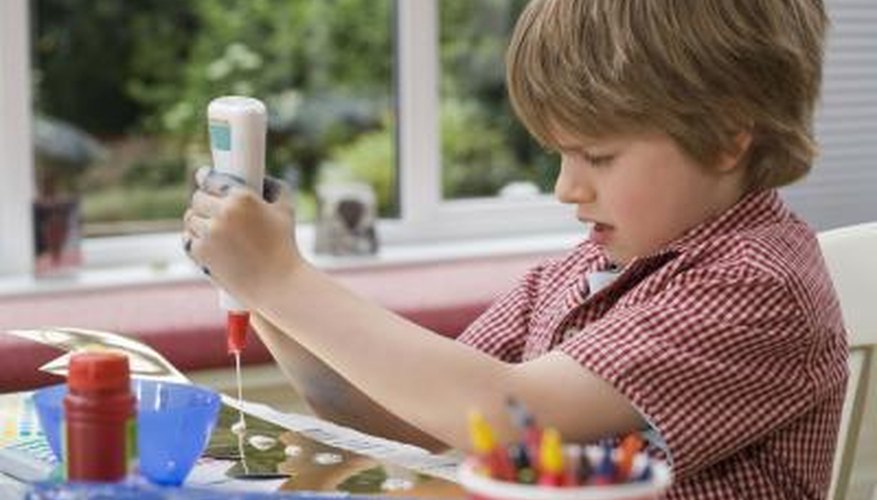PVA glue (polyvinyl acetate glue) is an adhesive made by emulsifying a polymer in water. PVA glues are very common and come in many varieties. They are typically used for crafts and woodworking. PVA glues are relatively inexpensive and non-toxic through contact with skin; however, they do contain petrochemical compounds. It's possible to mix effective substitutes for PVA glues using various household ingredients which are cheap to make and much safer if swallowed.
Ingredients
Many recipes for glues and pastes use cornflour or wheat flour. These are usually boiled with water. Other ingredients may include sugar or syrup. Preservatives, such as salt, vinegar and essential oils, may also be added. For a transparent glue that sticks to glass, gelatin may be used. These glues are non-toxic; care should be taken, however, if they are used by people with gluten or wheat sensitivities. Gelatin glues are non-vegetarian.
- Many recipes for glues and pastes use cornflour or wheat flour.
- For a transparent glue that sticks to glass, gelatin may be used.
No-Cook Paste
This basic paste is very quick and simple to make. Made from flour and water, it is safe for children to use and works well for collage and other paper crafts. The flour is placed in a bowl or jar and mixed with water until it is the right consistency. The paste should be sticky but not too runny. A pinch of salt stirred into the mixture acts as a preservative. The paste needs to be kept in a sealed container.
- This basic paste is very quick and simple to make.
- Made from flour and water, it is safe for children to use and works well for collage and other paper crafts.
Basic Glue Recipe
A basic glue can be made by mixing flour and sugar in a saucepan, then mixing them with water to make a smooth paste and heating the mixture on a medium heat. When cooled, the glue can be poured into a sealable container. A teaspoon of vinegar stops the mixture from growing mould, though it should still be sealed and stored in a refrigerator. A variant of this recipe calls for corn syrup instead of sugar.
- A basic glue can be made by mixing flour and sugar in a saucepan, then mixing them with water to make a smooth paste and heating the mixture on a medium heat.
- When cooled, the glue can be poured into a sealable container.
Glass Glue
PVA glue is sometimes used on smooth surfaces like glass. An alternative glue for use on glass can be made using gelatin. The gelatin is sprinkled onto 2 tablespoons of cold water and left to thicken. Three tablespoons of boiling skimmed milk and a few drops of wintergreen oil are mixed into the gelatin. This glue is good for sticking labels to jars or gluing tissue-paper to glass for stained glass projects. It must be used while warm.
- PVA glue is sometimes used on smooth surfaces like glass.
Fabric Glue
Because PVA glue is flexible, it is sometimes used for fabric projects. Although not suitable for items that must stand up to washing, a gelatin/glycerine glue can be used for fabric crafts in place of PVA. The glycerine makes the glue stay flexible after it dries. An envelope of plain gelatin is mixed with 6 tablespoons of boiling water, 2 tablespoons of white vinegar and 2 teaspoons of glycerine. The mixture can be cooled and stored. This glue is also suitable for use with paper.
- Because PVA glue is flexible, it is sometimes used for fabric projects.
- Although not suitable for items that must stand up to washing, a gelatin/glycerine glue can be used for fabric crafts in place of PVA.
